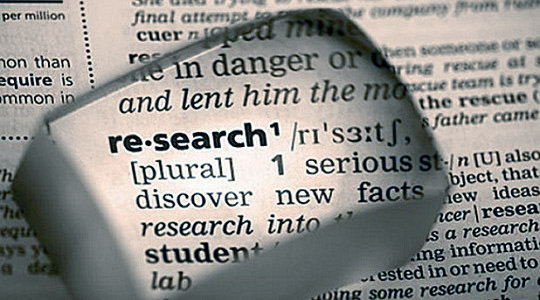
当前课程知识点:Western and Chinese Art: Masters and Classics > 8. The Blossoming of Holiness: From Da Vinci to Titian > 8.2 The reproducer of nature: Da Vinci > The reproducer of nature: Da Vinci
返回《Western and Chinese Art: Masters and Classics》慕课在线视频课程列表
返回《Western and Chinese Art: Masters and Classics》慕课在线视频列表
意大利文艺复兴的
三位伟大艺术家之一
就是达芬奇
达芬奇我们都知道他是伟大的画家
伟大的建筑家
伟大的机械设计家
伟大的数学家 物理学家
生物学家 植物学家
有学者曾经这样说
假如在达芬奇的时代有诺贝尔奖
他可能是人类历史上唯一可以
同时获得诺贝尔科学奖
和诺贝尔艺术奖的天才
达芬奇毕其一生
作为人类历史上伟大的画家之一
他亲手创造的作品并不多
据统计大概只有19件
他对于绘画的态度也是科学的态度
他认为绘画就是一门科学
而且他还说绘画是科学之科学
所谓科学之科学
达芬奇是指一个真正伟大的画家
必须同时是一个伟大的跨学科的
或者说多学科的科学家
他只有从科学的意义上
深刻的去认知了自然
他才能从艺术的意义上
真实的客观的再现自然
达芬奇把艺术称为第二自然
他说真正的绘画是一门科学
绘画为自然的生子
因为一切可见的事物
都是由自然产生的
作为他的孩子
它们又产生了绘画
因此我们谈到绘画就要
将他作为自然的生子
作为神的嫡亲
达芬奇对绘画的这样一种
科学的态度
正是文艺复兴绘画
从既往的绘画传统当中
开拓出一片新的绘画世界的
根本原因
达芬奇这种以绘画
为科学的艺术精神
正是文艺复兴绘画从既往的传统中
开拓出一个新的历史时代的
基本动力
达芬奇在他的一生当中
他是一边从事多种科学研究
一边进行他的绘画探索
他大量的进行人物速写和人体写生
据说他经常在街市上
看到他认为具有特色的行人
他就会追踪描绘
特别值得注意的是
达芬奇不仅进行人体写生
而且进行人体解剖
据他自己在笔记中称
他解剖了30来具尸体
在达芬奇的时代
根据罗马天主教法庭的规定
解剖尸体是被严令禁止的
由此我们可以看到
达芬奇作为一个画家和科学家
为了从事对人体的科学研究
甚至不惜冒犯法受惩的危险
现在我们来欣赏达芬奇
最重要的代表作品之一
《最后的晚餐》
这幅画被描绘在
当时修士们使用的餐厅的墙壁上
达芬奇在描绘这幅画的时候
他的构图的一个基本考虑就是
充分的利用了这个房间的透视结构
所以画面中的景致和餐厅的结构
是连续展开的
这样一种透视性的使用
和绘画的主题
是非常紧密的结合在一起的
我们现在来细致的分析
这幅《最后的晚餐》是描绘耶稣
在被犹大告密之后第二天
他将面临着被当时的罗马执政官
逮捕的一个场景
耶稣预知了他第二天要被犹大出卖
所以他在晚餐的时候
告诉他的十二使徒
你们当中有人要出卖我
他的这句话说出来之后
使在座的十二个使徒
都产生了意味不同的惊疑
达芬奇描绘的就是这一顷刻
在达芬奇之前有许多画家描绘
《最后的晚餐》
这是没有人敢于
如达芬奇一样来进行构图
达芬奇把耶稣和十二个使徒
都并排排列在一个长条桌的后面
这种水平的单线条的构图
是极不利于画家
自由组织和表现人物的
然而达芬奇的天才
创造力量就表现在这里
他在这个几乎是剥夺
艺术家构图自由的水平线条上
把画面中的十三个人
分成了四个组成部分
一个是十二个使徒
分别以三维数分成了四组
然后耶稣独成一个单位
这五个单位在画面上我能看到
在耶稣的话发出之后
他两边分别的两组人群
都像海浪一样开始了骚动
右边的这一两组使徒
他们的基本动势是向耶稣倾近的
而左边的这两组使徒
他们的基本动势是从耶稣后退的
但是我们会注意到
为什么会产生这种左右动势的差别
这是因为出卖耶稣的
犹大是在耶稣的右手边
这就是我们在画面上
看到的那个他的面孔
是唯一的被笼罩在阴影中的人物
这十二个使徒犹大表现了惊慌
而其他的使徒则分别在表现出
质疑 愤懑 猜测 追问等等的
心思和神情
但是我们看到这个
如海啸一般波动的场景
并没有进入骚乱之中
这是因为作为一个独立单元的
耶稣他如金字塔一样的
伫立在画面的中心位置
而且我们要注意到
耶稣的头顶
也就是由他的双手摊开构成的
他的身体的上肢的金字塔的顶部
是被稳稳的框在三个门框的
中间一个门框当中
也是最大的一个门框当中
而他的头顶正好就是我们所说的
透视绘画结构的目引点
也就是焦点
那么两边的墙进一步的
去强化突出了这个
透视结构目引点的存在
而他头顶背后的
以蓝天白云为图像的风景
更进一步的去描绘
和强化了他的头顶的焦点
如果我们把这幅画的透视结构
和整个餐厅的结构联系起来
我们就会发现假如我们置身于
这个餐厅当中来欣赏这幅绘画
我们所看到的所有的景象
最后都聚焦在耶稣的头顶
这个既是画面的焦点
也是整幅场景的核心
而这个核心
它是不容置疑的被固定在这里
它成为一个聚焦的焦点
但是它同时也是一切力量
和信念的发射处
这就是达芬奇
达芬奇可以说是
最伟大的应用了布鲁勒列斯基
所推动的几何画的透视结构
来把一个宗教场景
在看似单一机械的结构当中
而展示出一幅极具张力
而又高度稳定的戏剧
-1.1Factual impairment between image and message
--Factual impairment between image and message
-1.2Relationship between Fact and Truth
--Relationship between Fact and Truth
-1.3The image revelry in the information age
--The image revelry in the information age
-1.4 Nature, animal and human body art
--Nature, animal and human body art
-1.5 Art: from concrete bodies to metaphorical constructions
--Art: from concrete bodies to metaphorical constructions
-1.6 On defining art
-1.7 Globalization and Consumerism
--Globalization and Consumerism
-1.8 Art and Anti-art
-1.9The value classics hold to the modern time
--The value classics hold to the modern time
-Homework1
-2.1 The occurrence of prehistoric art
--The occurrence of prehistoric art
-2.2 Mysterious cave mural paintings
--Mysterious cave mural paintings
-2.3 Symbolism of rock engravings
--Symbolism of rock engravings
-2.4 Expressive functions about prehistoric painting
--Expressive functions about prehistoric painting
-2.5 Aesthetic characters of prehistoric art
--Aesthetic characters of prehistoric art
-2.6 The tribal art of bodily operation
--The tribal art of bodily operation
-2.7 The construction to reach the heaven
--The construction to reach the heaven
-2.8 Immortal art in ancient Egyptian
-- Immortal art in ancient Egyptian
-Homework2
-3.1 The relationship between mythology and Greek culture
--The relationship between mythology and Greek culture
-3.2 The marks of the epics written by Homer
--The marks of the epics written by Homer
-3.3 Three greatest tragedy drammatists in Greece
--Three greatest tragedy drammatists in Greece
-3.4 The aesthetics woven into ancient Greek architecture
--The aesthetics woven into ancient Greek architecture
-3.5 The ancient Greek sculpture
-3.6 The Greek sculpture of the classic age
--The Greek sculpture of the classic age
-3.7 Works of Phidias
-3.8 The essence and verve of ancient Greek classical art
--The essence and verve of ancient Greek classical art
-Homework3
-4.1The beginning of Chinese painting and Calligraphy
--The beginning of Chinese painting and Calligraphy
-4.2 Majesty and divinity from bronze ware
--Majesty and divinity from bronze ware
-4.3 The Duke Mao Tripod and eternal characters
--The Duke Mao Tripod and eternal characters
-4.4The Philosophy of Chuang Tzu
--The Philosophy of Chuang Tzu
-4.5Qin Shi Huang’s Terracotta Warriors
--Qin Shi Huang’s Terracotta Warriors
-4.6The painting in the Han Dynasty
--The painting in the Han Dynasty
-4.7 The sculpture in the Han Dynasty
--The sculpture in the Han Dynasty
-Homework4
-5.1Master Chuang Tzu's impact on the Wei and Jin Dynasties
--Master Chuang Tzu's impact on the Wei and Jin Dynasties
-5.2Talking about Ji Kang
-5.3 The general spirit of the Wei and Jin Dynasties
--The general spirit of the Wei and Jin Dynasties
-5.4 Wang Xizhi and his unrivalled attainment in calligraphy
--Wang Xizhi and his unrivalled attainment in calligraphy
-5.5 A Preface to the Orchid Pavilion
-- A Preface to the Orchid Pavilion
-5.6 The penmanship of two famous calligraphers surnamed Wang
--The penmanship of two famous calligraphers surnamed Wang
-5.7Gu Kaizhi and his painting
-5.8 Great poet Tao Yuanming
-Homework5
-6.1The Chan School in the Tang dynasty
--The Chan School in the Tang dynasty
-6.2“Cursive King”: Zhang Xu
-6.3《Four Calligraphy Works of Ancient Poems》
--《Four Calligraphy Works of Ancient Poems》
-6.4Zhang Xu and Huai Su
-6.5Wu Daozi and his paintings
-6.6Wang Wei and Chinese landscape painting
--Wang Wei and Chinese landscape painting
-6.7The relation of painting and poetry
--The relation of painting and poetry
-Homework6
-7.1 The beginning of Renaissance: Giotto
--The beginning of Renaissance: Giotto
-7.2 Giotto’s naturalism
-7.3 The frescoes in the Arenal Chapel
--The frescoes in the Arenal Chapel
-7.4 The Renaissance artist in north Europe: Robert Campin
--The Renaissance artist in north Europe: Robert Campin
-7.5 The Ghent Altarpiece
-7.6 Jan Van Eyck’s secular paintings
-- Jan Van Eyck’s secular paintings
-Homework7
-8.1 The beauty of dawn during Renaissance
--The beauty of dawn during Renaissance
-8.2 The reproducer of nature: Da Vinci
--The reproducer of nature: Da Vinci
-8.3 The immortal work Mona Lisa
-8.4 The classicism of Raphael
-8.5 The Sistine Chapel ceiling
-8.6 The mythology and sculpture of Moses
--The mythology and sculpture of Moses
-8.7 Michelangelo's struggle between life and death
-- Michelangelo's struggle between life and death
-8.8 The perceptual Titian and Venice
--The perceptual Titian and Venice
-Homework8
-9.1Rubens and the Baroque Art
-9.2Poussin and his classical spirit
--Poussin and his classical spirit
-9.3Rembrandt and his aptitude of wielding light and shadow
--Rembrandt and his aptitude of wielding light and shadow
-9.4 Rembrandt in his self-portrait
--Rembrandt in his self-portrait
-9.5 Vermeer and his painting
-Homework9
-10.1Landscape painting from the Five Dynasties period to the Northern Song Dynasty
--Landscape painting from the Five Dynasties period to the Northern Song Dynasty
-10.2 Creating painting out of poetry by Emperor Huizong of Song
--Creating painting out of poetry by Emperor Huizong of Song
-10.3 Viewing the small through the large
--Viewing the small through the large
-10.4 Combining the tangible with the intangible
--Combining the tangible with the intangible
-10.5 The atmosphere of freedom, detachedness and ease of landscape painting
-- The atmosphere of freedom, detachedness and ease of landscape painting
-10.6 Dwelling in the Fuchun Mountains
--Dwelling in the Fuchun Mountains
-10.7 Friendliness in Ni Zan’s painting
--Friendliness in Ni Zan’s painting
-10.8 A pristine and boundless world in Ni Zan’s painting
--A pristine and boundless world in Ni Zan’s painting
-Homework10
-11.1The origin and expression of the madman culture
--The origin and expression of the madman culture
-11.2 The madman Li Zhi
-11.3 Xu Wei: from gifted scholar to mad man
--Xu Wei: from gifted scholar to mad man
-11.4 The aesthetic ideology of Xu Wei
--The aesthetic ideology of Xu Wei
-11.5 Xu Wei’s notions and theories on painting practise
--Xu Wei’s notions and theories on painting practise
-11.6 Miscellaneous Plants and Flowers
--Miscellaneous Plants and Flowers
-11.7 Drunkenness in Xu Wei's art
-Homework11
-12.1 Winckelmann
-12.2 Neoclassical master: David
-12.3 The Death of Marat
-12.4 The Intervention of the Sabine Women
--The Intervention of the Sabine Women
-12.5 The aestheticism works by Ingres
--The aestheticism works by Ingres
-12.6 The contrast between photography and paintings
--The contrast between photography and paintings
-12.7 Courbet and realism
-Homework12
-13.1 Rousseau and emotionalism
-13.2 Kant's view about the beautiful and the sublime
--Kant's view about the beautiful and the sublime
-13.3 Goethe, from Werther to Faust
--Goethe, from Werther to Faust
-13.4 Byron, romantic hero
-13.5 The painting laws of Romanticism
--The painting laws of Romanticism
-13.6 John Constable
-13.7 The world of Turner
-Homework13
-14.1 Western modernism and Rodin
-14.2 The Gates of Hell
-14.3 Painting conception of Manet
--Painting conception of Manet
-14.4 Impressionism of Monet
-14.5 Cezanne:the Father of the art of modernism
--Cezanne:the Father of the art of modernism
-14.6 Van Gogh:painting and life
-14.7 The art value of Van Gogh
-Homework14
-15.1 art modernism
-15.2 porcelain urinal of Marcel Duchamp
--porcelain urinal of Marcel Duchamp
-15.3 This is not a pipe
-15.4 The great innovation artist: Picasso
--The great innovation artist: Picasso
-15.5 the infinity of art
-15.6 the art after Andy Warhol
-Homework15
-Final exam

